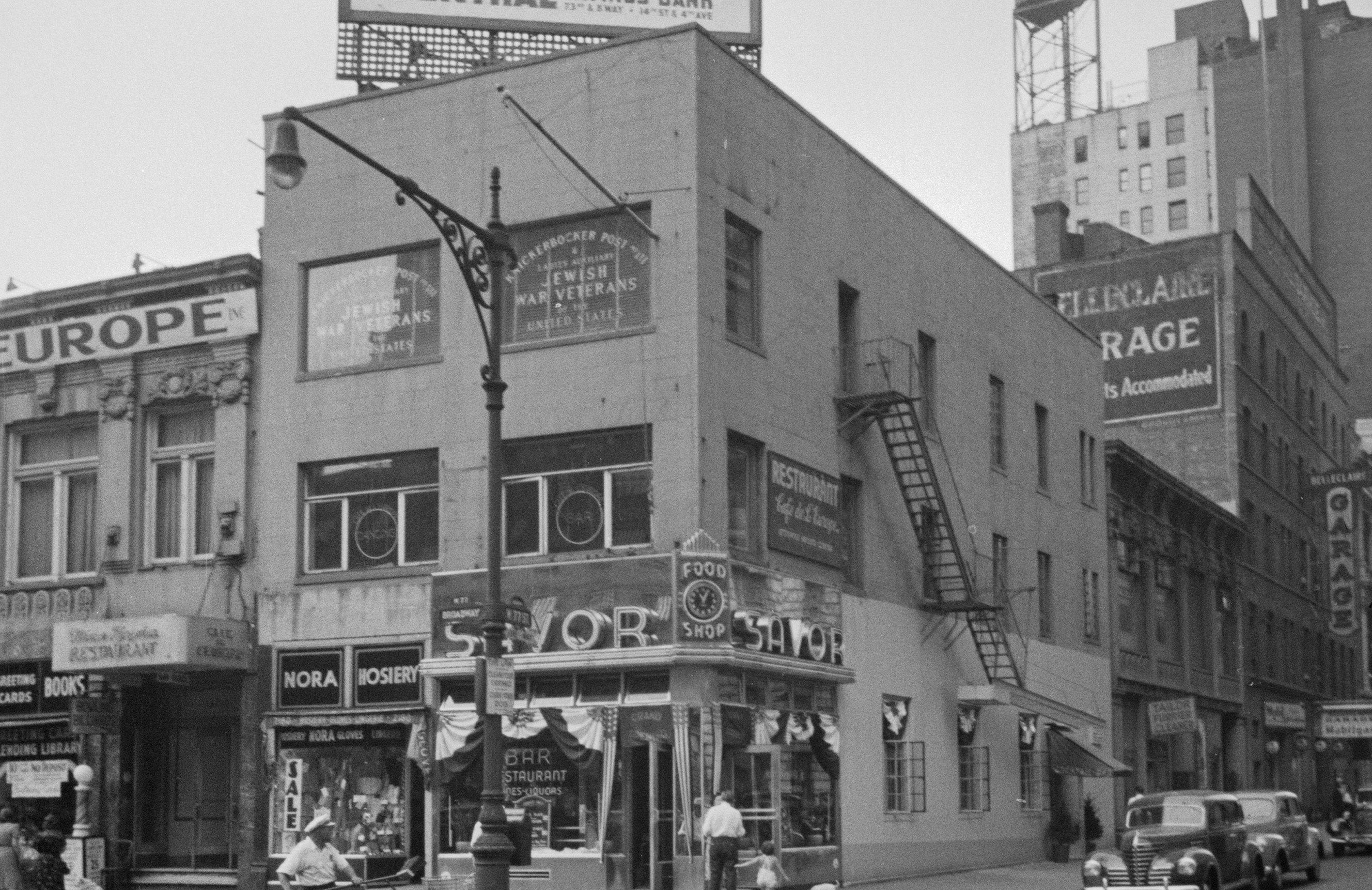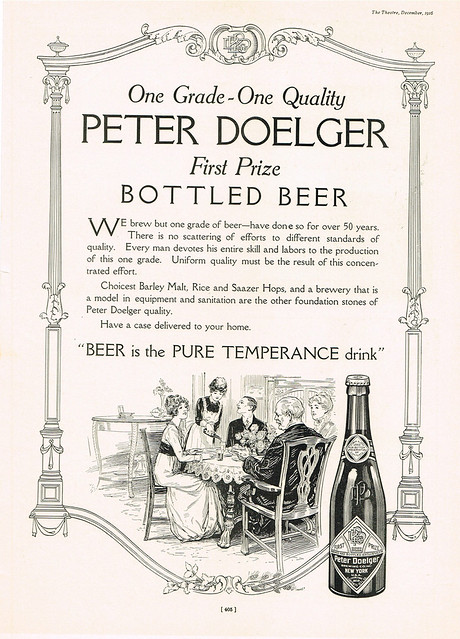
2180 Broadway
by Tom Miller
At the turn of the last century, Peter Doelger owned the three-story, brick-faced building at the northeast corner of the Boulevard (soon to be renamed Broadway) and 77th Street. The wealthy German immigrant ran the Peter Doelger Brewing Co. and owned small structures throughout Manhattan, the ground floors of which held saloons that sold only Doelger products. This building was home to the Irish saloon run by H. McGarry. Upstairs were meeting rooms and offices, accessed by a separate entrance on West 77th Street. One of them held the offices of the architectural firm of Soule & Son in 1899.
In 1908, Michael J. O’Connor, took over the saloon. Like many other barroom operators, he found a way around the troublesome Raines Law. Enacted in 1896, it prohibited the sale of alcoholic beverages on Sundays. That was problematic for saloon owners and their patrons, since most men worked six days a week, with Sunday being the only day they could relax (and drink). O’Connor circumvented the law by putting cots in the upstairs rooms, and registering the address as a hotel. A loophole in the law allowed a hotel with 10 lodging rooms to serve a drink with a meal or at least a sandwich on Sundays.
In 1914 the liquor license was registered in the name of Beatrice O’Connor, suggesting that Michael may have died. And in 1914 yet another Irishman, Martin Finnerty, took over the saloon. His excise, or liquor, license also listed the property as a hotel.
O’Connor circumvented the law by putting cots in the upstairs rooms, and registering the address as a hotel.
In fact, it is questionable as to whether any of the rooms were occupied by lodgers. On August 12, 1915, The New York Times reported that “John C. McGee, known as ‘Suspender Jack,’…announced yesterday that he was a candidate for Sheriff this fall.” McGee’s campaign rented upstairs rooms for its headquarters. He guaranteed voters, “My name stands for justice, charity and mercy.”
The Peter Doelger Brewing Co. sold the building in 1918. Martin Finnerty still ran the saloon, but its days were numbered. In 1919, the building was renovated, and Matera’s Restaurant took over the ground floor space. There were now just two large meeting spaces on the upper floors. One of them became home to the Order of Christian Mystics. The group occasionally held lectures, open to the public, like “Buddha and Buddhism,” given by Frederic Dean on October 6, 1919.
The other upper space was home to the United States Junior Naval Reserve. The group prepared young men for military service. Admiral George Dewey had described the organization saying, “They give our youth a training which teaches restraint, obedience and discipline based upon military rules and regulations which will prove not only valuable in the conduct of their various vocations, but at the same time fit them for duty for their country in case of war.”
Shortly after moving into 2180 Broadway, the Junior Naval Reserve published its annual yearbook. On April 10, 1920 Motor Boat magazine noted, “It contains many expressions of opinion from leading naval and yachting authorities upon the good work being accomplished by the league and the benefits which may be derived from its activities.”
In the fall of 1922, the United States Junior Naval Reserve initiated an art contest. On November 20, the New York Herald began an article saying, “What American artist will paint the most notable marine in 1922?” The group’s executive secretary, Edward A. Oldham, said the purpose of the contest was to revive “in the American mind the old love of things maritime that once made America the ‘mistress of the seas.’”
By the mid-1920’s the ground floor tenant was the Gourmet Rotisserie and Restaurant. Around 1939 the Knickerbocker Post No. 110 of the Jewish War Veterans rented the top floor and would remain for several years. With America’s entry into World War II, the American Women’s Voluntary Services, Inc. leased space as a “G. I. Rec Center.” Here military men on leave had a place to relax, play cards, and meet young ladies at sponsored dances. The ground floor by now had been divided, the spaces leased to the Savor Restaurant and a hosiery store in 1941.
“What American artist will paint the most notable marine in 1922?”
At war’s end, Madam Bernie Sager’s Dance School moved into an upper space. The Savor Restaurant remained in the corner space for decades, finally giving way to Shelter West Restaurant in 1981. In 1984 The New York Times described it as “an elegant Upper West Side café-restaurant with a dark oak-and-mahogany Art Deco bar, blue-and-silver mirrored tiled columns, original neon lighting and clock. Past the long, narrow barroom is a romantic dining room with Art Deco prints and Tiffany-style lamps.”
The Shelter West Restaurant closed in 1987, replaced by the Tuba City Truck Stop Restaurant, which touted its “gourmet catfish fillets.” Blondies restaurant was next, here by 1993 offering “loud Southern rock and country,” according to Berlitz Travelers’ Guide to New York City that year.
Upstairs, the Jewelry Arts Institute opened around 1995. The school offered one-year courses in Ancient and Classical Jewelry Making. The intensive training included “Byzantine enameling, classical chain making, classical setting, granulation in silver and gold, lapidary, and other related techniques,” according to the 1999 career guide, You’re Certifiable. The school, and the final ground-floor restaurant, the Manhattan Diner, closed in 2011 as the building’s owners prepared for its demolition to make way for construction of a 20-story apartment building.
Tom Miller is a social historian and blogger at daytoninmanhattan.blogspot.com
Building Database
Keep Exploring
Think Local First to support the business currently at 2180 Broadway:



